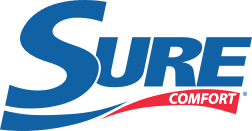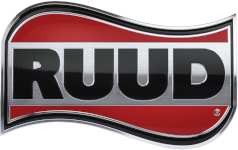Frequently Asked Questions
Q: What Can I Do to Troubleshoot Before Calling for Furnace or AC Service?
When your HVAC systems are out of order, it’s always easier to just pick up the phone and call for service. But sometimes the problems with HVAC systems are simple enough to fix on your own. Here are a few troubleshooting tips to consider before calling a HVAC tech.
Check filters: Always make sure your filters are clean and free of dirt and debris.
Check the thermostat: Confirm that the thermostat is on the correct setting and that the selector switch is set correctly. If the thermostat is not lit, it might be time to change the batteries.
Check the power supply: Breakers and power switches may be accidentally turned off for one reason or another so make sure the issue isn’t as simple as needing to turn a switch back on or replace a fuse.
Fuel levels/fuel supply: If you have a gas furnace and you’re experiencing a heating problem, confirm that the gas service hasn’t been terminated.
Vents: When troubleshooting your HVAC system, be sure to check vents, grills and ducts for blockages as that can significantly contribute to irregular airflow.
Q: What Causes My Washing Machine Water to Back Up to The Kitchen Sink?
Your washing machine and kitchen sink commonly share a drain. In fact, all plumbing fixture drains in your home eventually connect to the main drain pipe leading outside the home to a septic tank or sewer.
When your kitchen sink is clogged and backing up, that’s a problem that would need nothing more than a plunger to solve. However, when the water backing up into the kitchen sink is coming from your washing machine, you’re dealing with a more complex issue that’s caused by either a vent problem or a clogged drain.
Drain problems: Since washing machines actively pump a large volume of water, even a partial blockage in the shared drain pipe from the kitchen sink can be enough to cause the water from the washing machine to back up into the kitchen sink.
Vent problems: If you can hear a gurgling sound from the sink drain when the washing machine drains, it’s likely the backup is caused by a venting issue. If the kitchen or washing machine vent is plugged, undersized or run incorrectly, this will cause drainage problems.
A drain pipe clog can be cleared using a plumber snake. If the sink is gurgling, you may want our professionals to check the vent visually for blockages such as leaves, ice and nests.
Q: How Do I Deal With Tree Roots That Are Clogging My Sewer Drains?
When it comes to sewer line clogs, roots are common culprits. If left to grow, these roots can get thick enough to block the lines completely and even break open the pipes. When you’ve cleared up the clogs but the problem recurs soon after, it’s time for a camera inspection.
A video inspection allows us to examine the condition of your piping through a video monitor. We’ll also check for any damage caused by the roots and determine the expected remaining useful lives of the pipes.
Removing the roots thoroughly requires the expertise of an experienced technician. This means your pipes need to have all the roots scraped off of the interior diameter of the pipe and pushed out to the sewer main. The city sewer main may be backing up but that’s less likely. Just bear in mind that the sewer line in your property is your responsibility and not the city’s.
Q: When Should I Use a Hydro Jet and How Does It Work?
Typically, the first line of defense against a clogged line is a plumber’s snake or plunger. However, there are times when those methods don’t work, and that’s where the hydro jet comes in. Roots in the sewer line and other tough clogs are sometimes more than a snake can handle, but the hydrojet can clear these clogs effectively. Hydrojetting is also great for maintenance to clean out drains before a clog becomes an issue.
The hydro jet is usually inserted into the cleanout (opening of the sewer line). It then sprays a strong stream of water under high pressure to push any clogs or debris clear of the drainage paths.
Hydrojetting offers serious power that can cut through clogs and eliminate stubborn roots, making it the most efficient way to clean out clogged drains. Since hydro jets use extremely high water pressure, there’s the inherent risk of pipe damage. It’s important, therefore, to work with well-trained and experienced professionals who will ensure the clogs are removed from your drains without damaging your pipes.
Q: What Are the Signs You’re Having Thermostat Issues?
If your thermostat has issues, or if it’s not installed properly, it can have a significant impact on your comfort. Common thermostat issues and symptoms that provide you with clues to get your HVAC unit fixed include:
Your heater or AC refuses to start: This may be the result of a wiring issue that causes the thermostat to lose its connection to the HVAC system. Your thermostat could also be reading temperatures incorrectly and not turning your furnace or AC on when needed.
The thermostat has no power or is unresponsive: One of the typical signs that a thermostat is on its last straw is when adjusting temperature levels yields no change in temperature. You may also want to watch out for an unresponsive interface or unlit display.
Continuous running or frequent short cycling: A dirty thermostat, one that doesn’t sit level or a miscalibrated one can trigger almost continuous operation and short cycling that erodes energy efficiency.
If you’re unable to fix any of the above problems, be sure to have an experienced HVAC professional troubleshoot the issue further.
Q: What Can I Put Down My Garbage Disposal?
A common misconception is that you can put anything and everything down a garbage disposal. The truth, however, is that you have to be selective about what goes down your unit. Your garbage disposal uses a combination of rotating plates, water from your kitchen sink and the drainage pipes in your home to get rid of food particles that would otherwise end up in your kitchen garbage pail. While your disposal will accommodate most fibrous foods, you should never put cast-offs such as asparagus and corn-husks as these fibers may eventually damage the unit.
Other items you should avoid putting in the disposal include:
- Eggshells
- Coffee grounds
- Cooking oil/grease
- Beans
- Rice
- Pasta
- Stringy fruits and veggies
Vegetables and most fruits, tomatoes, cucumbers, potatoes, small bones and even meat scarps are also okay as long as they’re small scraps and not large chunks of waste. Even if you have a large, powerful disposal, some items such as eggshells will likely be okay to put into the unit but you want to avoid them altogether to prolong the equipment’s life.
Q: What Are the Different Types of HVAC Systems?
HVAC systems come in all shapes and sizes. Here are the most popular types in the market include:
Heating & Cooling Split Systems: These HVAC units have two main systems, one dedicated to heating your premises and another dedicated to cooling. They usually contain one outdoor unit such as a central AC and an indoor unit such as a furnace, both managed by a centrally located thermostat. The central AC uses compressors, coils and refrigerant to cool air, and a fan to blow out the hot air from your home.
Hybrid Split System: These are similar to the split HVAC systems mentioned above and very energy efficient because they have an electric hybrid heating system. That means homeowners can choose between electric or gas power to heat their homes. Split hybrid heating and cooling systems are ideal for areas where you need to regulate indoor temperatures due to climatic changes especially during colder months.
Ductless HVAC Systems or Mini Splits: These types of systems are great for some homes based on certain household needs. A ductless system has multiple units located in each room that would enable you to control heating and cooling. The units are mounted on the walls and connect to a compressor located outside the home.
Packaged Heating and Cooling Systems: These are combination units that contain both the heating and AC in one, making them very energy efficient. This HVAC type is common in warmer climate areas and is usually installed in the attic or in a storage space on the top floor of a multi-story home.




